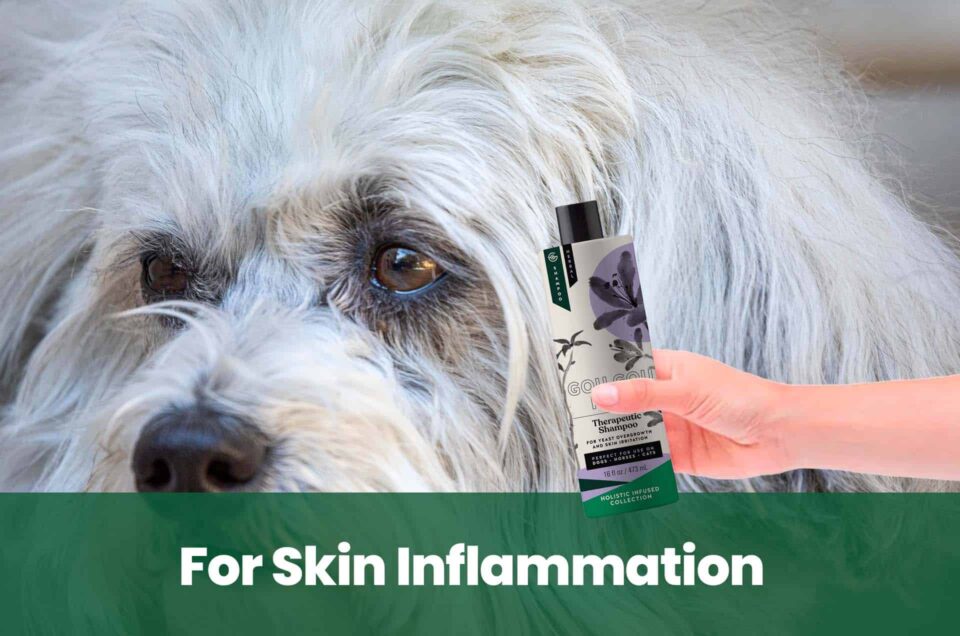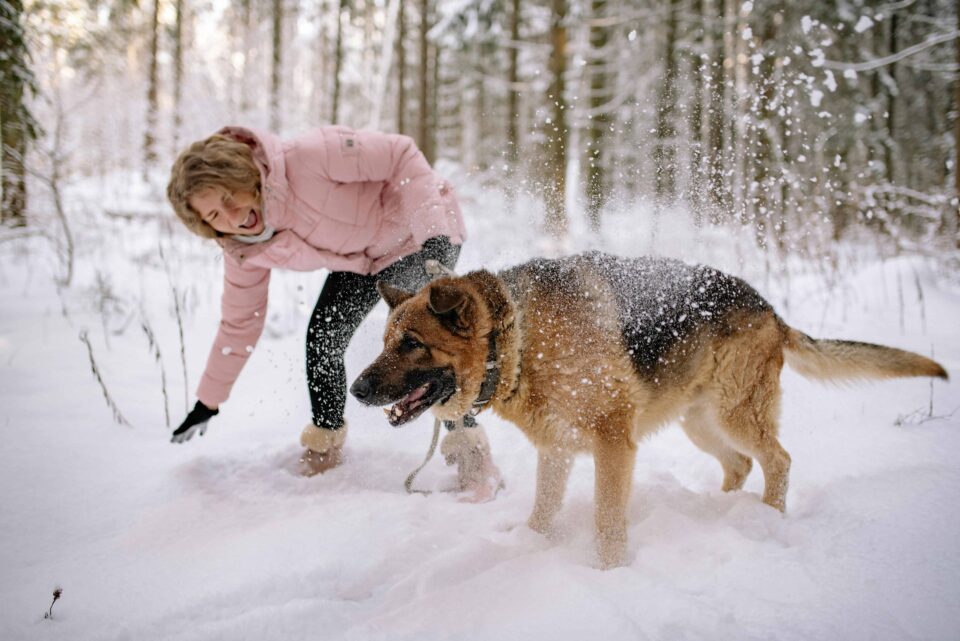Cold Weather Dog Tips: How to Keep Your Pup Warm and Safe This Winter
Winter is upon us, and our furry friends too. To keep your dog warm and safe, consider choosing appropriate gear and protecting their paws from icy sidewalks. These simple tips ensure their comfort and health during the cold months.
Key Takeaways
- Know your dog’s cold tolerance and adjust outdoor time accordingly.
- Invest in proper winter gear like sweaters and boots for your pup.
- Keep your dog’s paws safe from ice and salt with regular checks and protection.
- Create a warm indoor environment with heated beds and cozy spots.
- Adjust your dog’s diet and hydration to support their health in colder months.
Understanding Your Dog’s Cold Tolerance
Recognizing Signs of Cold Stress
Dogs can experience cold, even with fur, and it’s important to monitor their signs, such as shivering, whining, or reluctance to move, especially when temperatures drop below 45°F.
Breeds That Handle Cold Well
- Huskies, Malamutes, and Saint Bernards: suitable for cold climates due to thick double coats.
- Chihuahuas and Greyhounds: slightly susceptible due to short coats.
- Both breeds should not be left outside in freezing conditions.
How Age Affects Cold Tolerance
Age significantly impacts a dog’s ability to handle cold weather, with older dogs more vulnerable due to joint issues and developing bodies, so it’s crucial to consider their age when deciding outdoor time.
Essential Winter Gear for Your Dog
Winter can be harsh, and just like we bundle up, our furry friends need some extra layers too. Ensuring your dog is well-equipped for the cold months is crucial to their comfort and health. Let’s dive into the essentials.
Choosing the Right Sweater or Jacket
Dogs of smaller breeds or short coats require additional warmth for cold weather. Select a snugly fitting sweater or jacket, ensuring it fits snugly without being too tight.
Importance of Dog Boots
Dog boots are essential for protecting sensitive paws from harsh elements like ice, snow, and salt, with proper fit and good traction. Paw wax can also provide protection.
Selecting Heated Dog Beds
A heated dog bed offers warmth and comfort, especially for older or joint-related dogs, and should have an auto-shutoff feature for safety.v
Protecting Your Dog’s Paws in Winter
Dangers of Ice and Salt
Winter can cause paw irritation and injury due to ice and salt, so clean them after walks and keep warm water nearby to rinse them, preventing discomfort.
Using Paw Wax and Booties
Paw wax is a great option for protecting your dog’s feet from the elements. It forms a barrier against ice and salt, minimizing damage. Just apply it before heading out for a walk. Booties are another effective solution. They provide full coverage and are excellent for long walks or playtime in the snow. Make sure they fit well to avoid slipping or discomfort.
Regular Paw Inspections
Check your dog’s paws regularly during the winter months. Look for signs of irritation, redness, or cracking. If you notice any issues, consider using a 3-in-1 Paw Ointment to soothe and heal. Regular inspections help catch problems early, ensuring your dog stays happy and healthy throughout the season.
Related: How to Help a Dog With Arthritis at Home
Indoor Activities to Keep Your Dog Warm
Winter can be tough on our furry friends, but keeping them active indoors is a great way to ensure they’re warm and entertained. Here are some tips to make the most of indoor time with your pup.
Interactive Toys for Mental Stimulation
Dogs need mental exercise just as much as physical activity. Interactive toys are a fantastic way to keep your dog’s brain engaged. Consider toys like snuffle mats, where they can “hunt” for treats, or puzzle feeders that challenge them to solve problems for a tasty reward. Training sessions for new tricks can also be a fun way to engage your dog mentally.
Creating a Cozy Indoor Environment
Making your home a warm haven for your dog is crucial during cold months. Set up a cozy corner with a soft bed and blankets where your dog can snuggle up. Heated dog beds are a great option for dogs that feel the chill easily. Make sure this spot is away from drafts and cold floors.
Benefits of Heated Dog Beds
For older dogs or breeds that are sensitive to cold, heated dog beds can significantly improve their quality of life. These beds provide consistent warmth, which can be soothing for joints and muscles. Look for beds with a safety auto-shutoff feature to ensure they’re safe for long snoozes.
For more engaging ways to keep your dog active during winter, consider exploring indoor activities like tug-of-war or indoor fetch games.
Safety Tips for Outdoor Winter Adventures
Limiting Time Outside
When it comes to winter, less is more for your furry friend. Dogs can suffer from frostbite and hypothermia just like humans. If it’s too cold for you, it’s definitely too cold for your dog. Especially during extreme cold snaps, limit your dog’s outdoor time. A few quick walks and some playtime in the snow should be enough to keep them happy and healthy without overexposing them to the elements.
Monitoring for Frostbite
Frostbite can sneak up on your pup, especially on their ears, paws, and tail. Be vigilant for any indications of frostbite, such as pale, cold, and hard skin. If you suspect frostbite, it’s crucial to warm the affected area gradually with warm (not hot) water and seek veterinary care immediately.
Keeping Your Dog Leashed
Winter can be disorienting for dogs due to snow and ice, so it’s crucial to keep them on a leash during walks to prevent wandering and avoid unexpected falls. Keeping your dog warm, safe, and close to you ensures a safe and enjoyable season.Be vigilant for any indications of frostbite, such as pale, cold, and hard skin.
Here’s a quick checklist to keep your dog safe:
- Limit outdoor time to short, supervised sessions.
- Check for frostbite signs regularly.
- Always use a leash during walks.
Related: Shea Butter for Dogs: What are the Benefits?
Nutrition and Hydration During Cold Months
Adjusting Your Dog’s Diet
Winter demands increased energy for dogs to stay warm, requiring more food intake. However, don’t overpack; monitor weight and adjust intake accordingly. Consult your vet for the best diet plan for your furry friend.
Ensuring Fresh Water Supply
Cold weather can trick us into thinking our dogs don’t need as much water, but staying hydrated is just as important in winter as in summer. Make sure your dog has constant access to fresh water. If it’s freezing outside, consider using a heated water bowl to prevent their water from turning into ice. Remember, hydration is key for a healthy coat and skin.
Supplements for Joint Health
Winter can be challenging for dogs with arthritis, so consider adding supplements like glucosamine or omega-3 fatty acids to their diet to maintain joint health. Consult your vet before starting. Maintaining well-fed and hydrated dogs is crucial for their health and happiness.

Recognizing and Treating Cold-Related Health Issues
Identifying Hypothermia Symptoms
- Symptoms include shivering, cold ears, paws, and tails.
- Warning signs include lethargic or whining.
- Dogs may curl up or seek warm spots.
- Action needed to get them indoors.
First Aid for Frostbite
Frostbite is sneaky and can be hard to spot right away. It usually hits the ears, paws, and tail first. The skin might look pale or even turn bluish. If you suspect frostbite, gently warm the area using a warm, damp cloth. Avoid rubbing, as this can cause more damage. If your dog shows signs of frostbite, it’s best to contact your vet for advice.
When to Consult a Veterinarian
- Identifying if a dog’s symptoms are merely chilly or if they are in pain.
- Seeking immediate vet care if symptoms persist or worsen after warming up.
- Immediate action, such as moving pets indoors, is crucial to prevent further health issues.
- Identifying and handling health problems during cold weather.
Related: Choosing the Best Dog Shampoo: What Matters Most
Wrapping Up: Keep Your Pup Cozy This Winter
Keeping your furry friend warm and safe during winter requires planning and planning. Bundle them in a sweater and protect their paws from icy ground. Ensure their well-being and relish your winter walks together, as a contented dog leads to a contented owner.
~Veterinarian Recommended